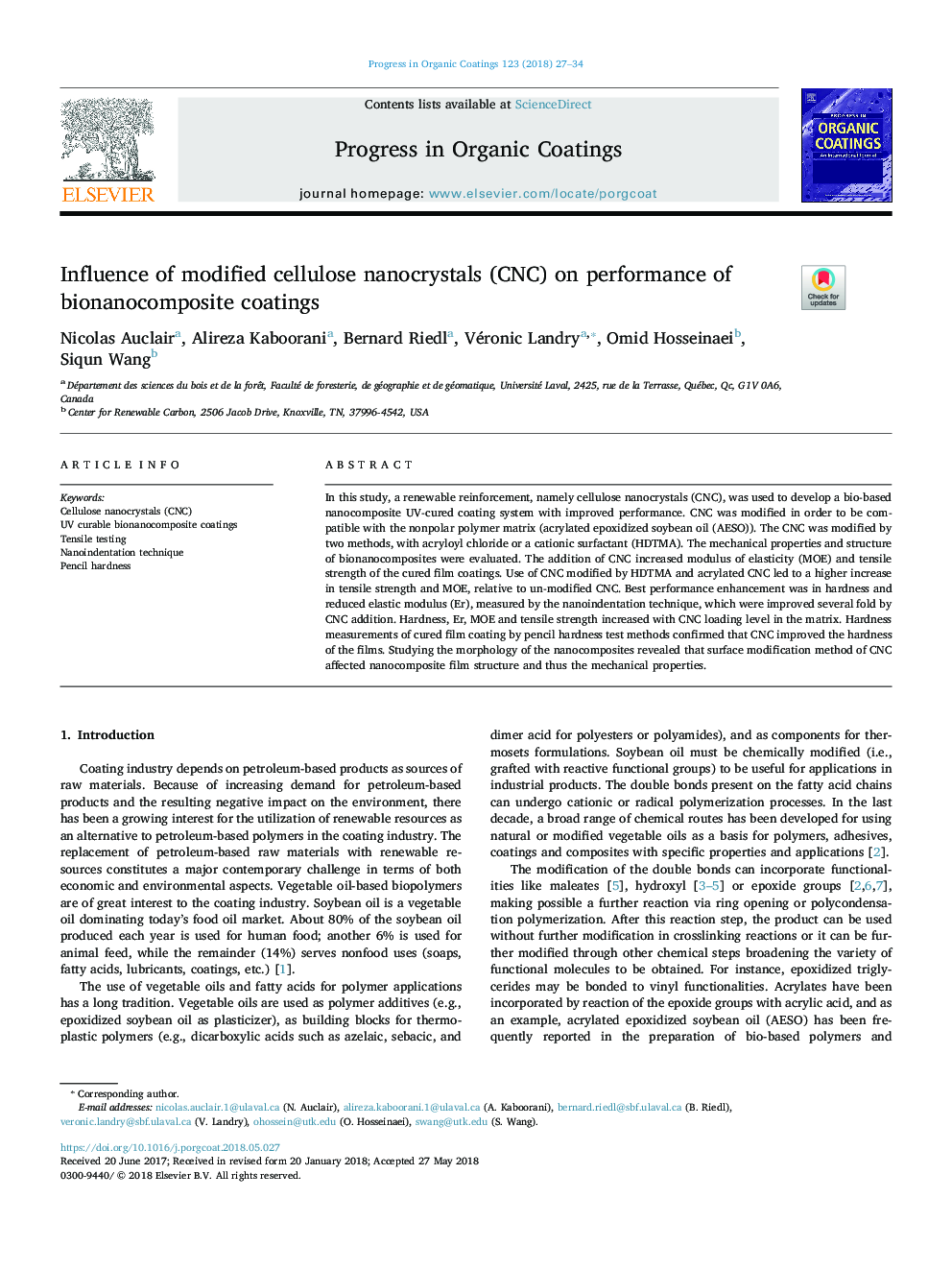| Article ID | Journal | Published Year | Pages | File Type |
|---|---|---|---|---|
| 7105278 | Progress in Organic Coatings | 2018 | 8 Pages |
Abstract
In this study, a renewable reinforcement, namely cellulose nanocrystals (CNC), was used to develop a bio-based nanocomposite UV-cured coating system with improved performance. CNC was modified in order to be compatible with the nonpolar polymer matrix (acrylated epoxidized soybean oil (AESO)). The CNC was modified by two methods, with acryloyl chloride or a cationic surfactant (HDTMA). The mechanical properties and structure of bionanocomposites were evaluated. The addition of CNC increased modulus of elasticity (MOE) and tensile strength of the cured film coatings. Use of CNC modified by HDTMA and acrylated CNC led to a higher increase in tensile strength and MOE, relative to un-modified CNC. Best performance enhancement was in hardness and reduced elastic modulus (Er), measured by the nanoindentation technique, which were improved several fold by CNC addition. Hardness, Er, MOE and tensile strength increased with CNC loading level in the matrix. Hardness measurements of cured film coating by pencil hardness test methods confirmed that CNC improved the hardness of the films. Studying the morphology of the nanocomposites revealed that surface modification method of CNC affected nanocomposite film structure and thus the mechanical properties.
Related Topics
Physical Sciences and Engineering
Chemical Engineering
Process Chemistry and Technology
Authors
Nicolas Auclair, Alireza Kaboorani, Bernard Riedl, Véronic Landry, Omid Hosseinaei, Siqun Wang,
